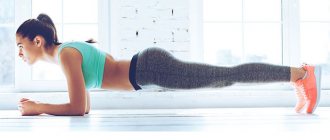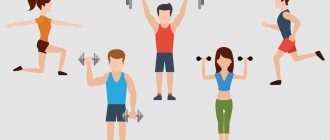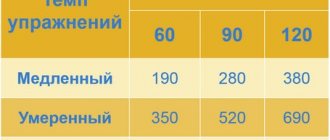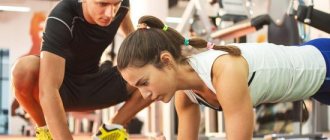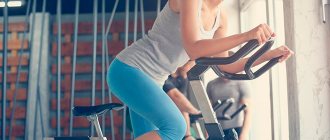How long should you walk every day to lose weight?
Many of us play sports, go to the gym, and go on diets. Meanwhile, a number of studies prove that daily long walks are no less effective in the fight against extra pounds.
How to turn walking into a set of exercises
The distance you travel, your speed, and your weight are the main factors that influence the number of calories you burn while walking. To achieve good results, it is worth following a regular plan and using a pedometer.
Always take it with you - this way you will count all the steps you take in a day. If you walk a long distance in a day, but are not losing weight, then a pedometer will help you calculate how many steps you need to add to start losing weight.
How many steps should you take per day to lose weight?
These approximate calculations will help you create a personal load plan (keep in mind, a lot depends on the individual characteristics of the body, lifestyle, nutrition, and health):
100 kcal = 2,000 steps = 1.6 km
1 kg = 140,000 steps = 7,000 kcal = 112 km
Ways to increase the duration of your walks:
- If possible, avoid using a car or bus.
- See and pick up children from school.
- Do not use elevators or escalators.
- Walk your dog longer.
To make your walks interesting, try:
- take a friend with you
- listen to your favorite music and interesting audio books,
- walk in different places, choose new routes.
During the cold season, you can continue exercising at home if you have a treadmill. You can watch your favorite movies and TV shows and still lose weight or stay in shape.
How to walk correctly?
It is worth considering that even for the same person, the step length differs and ranges from 40 to 100 cm. To find out your own step length, you can measure a distance of 10-20 m and walk it at the usual average speed, counting steps. Then divide the distance traveled in centimeters (1,000 or 2,000) by the number of steps taken.
- Up to 70 steps/min. For healthy people, this speed has virtually no training effect. Recommended for patients recovering from myocardial infarction or suffering from severe angina.
- 71−90 steps/min., 3−4 km/h Recommended for people with cardiovascular diseases.
- 91−110 steps/min., 4−5 km/h Such a walk is a noticeable load for the body and is suitable for all healthy people.
- 111−130 steps/min. An excellent workout for the body, but such a speed is difficult to maintain for a long time even for healthy people.
Rules for walking.
- Start with light loads, gradually moving to longer and faster walking. First, the load should be increased due to the duration of the walk, and only then by increasing the speed. The loads must be adequate to the state of your health.
- You need to exercise regularly. One lesson a week will not give you any positive effect. If it is not possible to walk every day, then do it at least 2-3 times a week. You can walk at any convenient time during the day, but not earlier than 1–1.5 hours after eating.
- You need to consult a doctor and undergo a medical examination. Repeat it 1-2 times a year.
- When walking, watch your posture. The torso should be straight, shoulders back, stomach pulled in.
It is important to remember that walking too slowly for a short distance does not give good results, but walking too long and too quickly can cause harm to an unprepared person.
Laboratory Diagnostics Doctor, Central House of Writers
Novopolotsk city hospital
Myasnikova N.M.
Circuit training at home: a set of exercises
Do the exercises in the order they are given below.
Circle 1:
- 40 jumps
- 20 squats
- 30 seconds of running in place with high knees
- 1 minute chair exercise
- 1 minute walk in place
- 20 side lunges
- 10 reverse triceps push-ups
- 30 seconds of plank exercise
- 30 press raises
- 1.5 minutes of exercise “Pedals”.
All subsequent circles are similar to the first.
How to do it?
Jumping. Jumping with arms raised up (as in the photo below). Can be replaced with a jump rope within 1.5 minutes.
Jumping up
Squats. Feet shoulder-width apart, knees slightly apart. The abdominal muscles are strong, tense, the back is straight, the body weight is concentrated on the heels. From this position, slowly bend your knees and squat until parallel to the floor. The feet do not leave the ground, the knees do not go beyond the line of the toes. The back is in a neutral position, maintaining its natural curvature, the buttocks are tense.
The movement should be as if you want to sit down on a chair. Stay in this position for a second, then straighten your legs (rise) and return to the starting position.
Squats
Running in place with high knees. Performed as in the photo below.
Running in place with high knees
"High chair." Performed in the position as in the photo below. You need to press your back and buttocks against the wall and hold in this position for the specified time. Pelvis and arms parallel to the floor. The buttocks and abs are strong.
Exercise "Chair"
Walking in place. Walking in place is performed at a fast or moderate pace.
Side lunges. Place your feet as wide as possible. As you inhale, bend your right one and transfer your body weight to it, tilting your body and moving your buttocks back and straining them. Go down. The left leg is straight. As you exhale, straighten your right leg and transfer your body weight to the left, lower down, bending it (repeat the movement exactly, but on the other leg).
Side lunges
Triceps push-ups from a bench. Performed from a position as in the photo below: palms on the edge of a horizontal bench, abs tense, elbows looking straight back, not spreading to the sides. As you exhale, push your body weight up, feeling the triceps work. Hold at the top for a couple of seconds, then slowly lower down, keeping your abdominal muscles strong. At the lowest point, the elbows are parallel to the floor.
Triceps push-ups from a bench
Plank. This article will tell you in detail how to do this exercise correctly.
Exercise "Plank"
Raising the press. Performed from a lying position. Feet together, raised, hands behind the head. The goal is to lift the upper body as high as possible using the abdominal muscles . The neck is relaxed, we don’t help ourselves with our hands.
Abs exercise
"Pedals." Performed from a lying position. The shoulder blades are lifted off the floor, the legs are raised, and the hands are behind the head. Alternately you need to bend one or the other leg at the knee. Imagine pedaling in the air.
Exercise "Pedals"
Kettlebell workouts
Energy consumption:
about 15 kcal per minute.
Scientists at the University of Wisconsin found that swinging kettlebells burns more than 20 kcal per minute if you work for at least 20 minutes. You can also not limit yourself to just swings, but do circuit training for different muscle groups and include, for example, squats and lifting weights overhead. Energy expenditure will vary from 9 to 13.5 kcal per minute.
Photo: istockphoto.com
Where is the best place to train?
You don’t need a special uniform to practice stretching.
Stretching does not require special equipment or equipment (unless we are talking about stretching on a pole), so many are sure that home workouts are no less effective than going to the gym. However, in practice, repeating exercises from video complexes will not compare in effectiveness with full-fledged exercises under the supervision of a trainer.
In addition, many find it difficult to force themselves to work at full capacity on their own. The longer the training, the more difficult it is to do this. At the same time, calorie consumption is calculated based on an hour of exercise. There is a high risk of making mistakes that could result in injury. So the answer to the question of how many calories are burned per hour when stretching depends on whether you are doing it yourself or under the supervision of a professional trainer.
What muscles are involved?
Muscles receiving load in crossover swings from the lower block:
- Back : main - gluteus maximus, hamstring muscles, stabilizer muscles - spinal extensors, obliques, gluteus minimus/medius, quadratus lumborum, rectus abdominis ( "Abs": myth or reality? ).
- Forward : front surface of the thigh (quads).
- To the side : what muscles work - gluteus medius, stabilizers, inner thigh (adductor).
You will learn about the advantages of performing exercises with one leg and their effect on the gluteal muscles from the article “ Romanian deadlift on one leg with a barbell or dumbbells: developing the buttocks
How to fit it into a workout?
- Legs should be pulled back at the end of the workout on the thighs and buttocks, in other words, leg-butt. It is well suited for finishing off gluteal muscles.
Let us remind you: swinging your legs will not make your buttocks firm and will not remove cellulite .
- Choose light or medium weight , there is no need to be a hero here. It is important to feel the movement and do it as efficiently and thoughtfully as possible.
- Breathing technique : exhale - with effort, moving the legs back; inhale - when placing your foot.
- This exercise, like isolation in general, is a high-repetition exercise ; there will be no benefit from a large weight and a small number of repetitions, because punching and finishing a certain, previously significantly tired muscle is important.
- Number of approaches 3-5, reps 15-20, concentration 100%.
In isolation, you can twist and work within the amplitude, shorten and pump the muscles. Read more about these techniques in the article “Full and partial amplitude. Work within the amplitude. Pumping"
Cellulite does not go away when playing sports and losing weight: what to do?
Calorie loss during intense exercise
Maximum loads allow you to burn only 250 kcal
When using a pole, stretching sessions become more intense, which increases their effectiveness. Due to postures that are not typical for everyday life, the load increases. The emphasis is not only on stretching the muscles, but also on maintaining the pose itself, which is not always easy.
As a rule, intense stretching helps burn up to 250 calories in an hour-long workout. If the training duration is shorter, this figure decreases. In terms of the intensity of kilocalorie expenditure, stretching can be compared with walking, but in the latter case there is no deep muscle development, so the conclusion suggests itself that the pronounced effect is not always associated with the number of calories lost. The higher the level of preparedness and the easier the exercises are, the less energy is consumed.
Standardized tables
Approximate daily calorie intake can be found in standardized tables.
Standards for men
| Age | Activity | Norm (kcal) |
| 17–40 years old | Low | 2 400–2 600 |
| Average | 2 600–2 800 | |
| High | 3 000–3 200 | |
| 41–60 years | Low | 2 000–2 200 |
| Average | 2 400–2 600 | |
| High | 2 600–2 800 | |
| over 61 years old | Low | 2000 |
| Average | 2 200–2 400 | |
| High | 2 400–2 600 |
Norms for women
| Age | Activity | Norm (kcal) |
| 17–40 years old | Low | 1 800–2 000 |
| Average | 2 000–2 200 | |
| High | 2 200–2 400 | |
| 41–60 years | Low | 1 600–1 800 |
| Average | 1 800–2 000 | |
| High | 2 000–2 200 | |
| over 61 years old | Low | 1 600 |
| Average | 1 800 | |
| High | 2 000 |
Stretching in Anix Dance under the guidance of professionals
Classes in our studio are held in two halls, which helps you choose the appropriate option based on geographic location. Stretching is carried out by specialists with appropriate qualifications. They will clearly demonstrate that doing the splits is possible at any age.
The training schedule can be found on the website; the time and number of training sessions per month can be selected individually. The first lesson, which will help you get to know stretching better, will cost 300 rubles.
Overcome apathy, the fear that your own abilities are far from what you saw on the TV screen. Bring a positive attitude with you and see that stretching makes life more interesting!
How many calories are burned in an hour of stretching?
If you want not just to lose weight, but to activate your metabolism, get rid of cellulite and salt deposits, then stretching will be the best option. You can train with any body type, regardless of the amount of extra pounds and age. And this is a significant plus - not everyone will risk doing serious physical activity in the absence of the appropriate form.
Stretching does not belong to the category of intense training; you should not expect radical losses of energy from it. The energy expenditure barrier varies from 150 to 200 kilocalories per hour-long workout. Specific numbers are directly related to metabolism, starting body weight, and the degree of metabolic intensity. The easiest way to obtain such information is by using special fitness bracelets.
